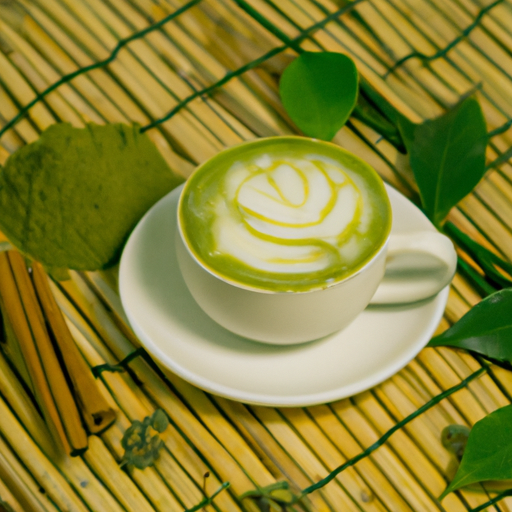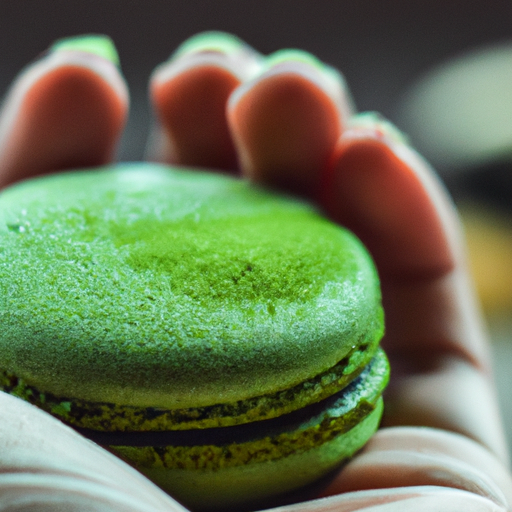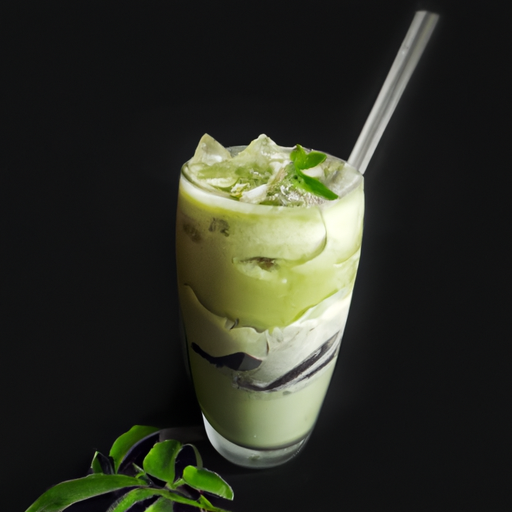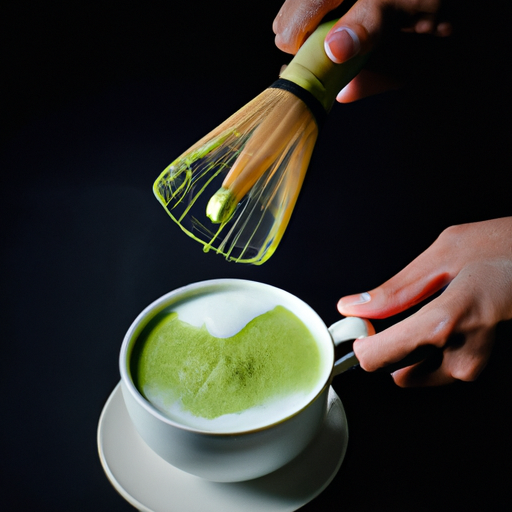As someone who passionately enjoys matcha, I’m familiar with the challenge of enhancing its flavor. Matcha, a type of powdered green tea from Japan, has become increasingly popular lately thanks to its distinct and beneficial qualities. Yet, there are those who think matcha tastes too bitter or overly earthy for their liking.
This is where my knowledge and experience come in handy, as I have discovered some tips and tricks to help enhance the flavor of matcha. If you’re looking to upgrade your matcha game, you’ve come to the right place.
In this article, I will share with you some insights on how to make matcha taste better. From understanding the flavor profile of matcha to choosing the right quality of matcha, using the right temperature of water, preparing matcha with the right tools, adding flavor enhancers, trying different matcha recipes, experimenting with the serving size, storing matcha properly, and enjoying the matcha experience, I will cover everything you need to know to elevate your matcha game.
Let’s get started!
Key Takeaways
- Understanding the flavor profile of matcha is crucial in making it taste better.
- Choosing the right quality of matcha involves considering its grade, origin, and seasonal variations.
- Using the right temperature of water and tools, such as a traditional bamboo whisk and bowl, is crucial to achieving the perfect texture and flavor of matcha.
- Experimenting with the serving size, adding flavor enhancers, and trying different matcha recipes can also enhance its flavor.
Understanding the Flavor Profile of Matcha
Let’s delve into the wonderful world of matcha and discover its unique flavor profile! Matcha is a type of powdered green tea that has a distinct taste and aroma.
The flavor profile of matcha is characterized by its umami taste, which is a savory and slightly bitter flavor. This taste is balanced by the sweetness and astringency of the tea. The aroma notes of matcha are grassy and vegetal, with a hint of nuttiness.
In addition to its taste and aroma, matcha also has a unique mouthfeel and aftertaste. The texture of matcha is smooth and creamy, with a slightly grainy texture due to the tea leaves being ground into a fine powder. The aftertaste is refreshing and slightly astringent, leaving a pleasant sensation in the mouth.
Understanding the flavor profile of matcha is crucial in making it taste better. By knowing the umami taste, aroma notes, mouthfeel, and aftertaste, you can appreciate the nuances of matcha and experiment with different ways to enhance its flavor.
Now, let’s move on to the next section and learn about choosing the right quality of matcha.
Choosing the Right Quality of Matcha
When it comes to choosing the right quality of matcha, there are several key points to consider.
As someone who enjoys matcha regularly, I always make sure to pay attention to the grade of matcha I purchase, as well as its origin and any seasonal variations.
By doing so, I can ensure that I’m getting the best possible matcha for my needs, whether I’m using it for drinking or cooking.
Grades of Matcha
Matcha can be compared to fine wine, with higher grades offering more complexity and depth in flavor. There are different matcha grades available in the market, each with varying levels of quality and taste. The grades are usually determined by the tea leaves’ processing method, harvesting time, and origin.
To give you an idea, here’s a table that compares the different matcha grades and their taste profile:
| Matcha Grade | Taste Profile |
|---|---|
| Ceremonial Grade | Smooth and sweet with no bitterness |
| Premium Grade | Slightly bitter with a hint of sweetness |
| Culinary Grade | Bitter with a slightly astringent taste |
| Kitchen Grade | Very bitter and astringent |
As you can see, the higher the grade, the smoother and sweeter the matcha tastes. Ceremonial and premium grades are ideal for drinking as tea, while culinary and kitchen grades are better suited for cooking and baking. It’s important to note that the taste of matcha can also vary depending on its origin and seasonal variations.
Origin and Seasonal Variations
Origin and seasonal variations greatly impact the flavor profile of different matcha grades, providing a unique and complex experience for those who indulge in this beloved Japanese tea. The origin of matcha affects its taste because it determines the quality of the tea leaves used.
Matcha from Uji, Kyoto, for instance, has a distinctive sweet and mellow flavor that is highly sought after by tea connoisseurs. Meanwhile, matcha from Shizuoka is known for its robust flavor with a slight bitterness that is perfect for those who like a stronger taste.
In addition to origin, seasonal variations also affect the taste of matcha. The first harvest, which is usually in the spring, produces the highest quality matcha with a smooth and delicate taste. On the other hand, matcha harvested in the summer has a more robust flavor and a slightly astringent taste.
Matcha’s cultural significance and health benefits make it a popular drink around the world, and understanding its origin and seasonal variations can help one appreciate the unique flavor profile of different grades.
Now, let’s move on to the next section and learn about using the right temperature of water to make matcha taste even better.
Using the Right Temperature of Water
By steeping your matcha with water that’s just below boiling, you’ll unlock its full flavor potential. Water temperature tricks and infusing techniques are essential when preparing matcha. Using the right temperature of water is crucial because it affects the taste and texture of the matcha. If the water is too hot or too cold, the matcha will either taste burnt or bland. Therefore, it’s essential to use the correct water temperature to get the perfect taste.
To get the right water temperature, it’s important to boil the water and then let it cool down to around 80°C. This temperature is perfect for infusing the matcha without altering its taste. Boiling water is too hot, and it will burn the matcha, while cold water won’t extract the flavor completely. Therefore, using water at the right temperature is crucial to get the perfect taste.
Here are five bullet points to evoke emotion in the audience:
- Using the right water temperature will give you a smooth and rich flavor.
- Steeping matcha with boiling water will ruin the taste and texture.
- Cold water won’t extract the matcha flavor completely, leaving it bland.
- Using the correct temperature will give you a vibrant green frothy texture.
- Infusing matcha with the right temperature will make it taste refreshing and energizing.
Using the right temperature of water is essential when preparing matcha to get the perfect taste. However, it’s equally important to use the right tools to get the perfect texture and flavor. The next section will discuss the right tools necessary to prepare matcha and the importance of using them.
Preparing Matcha with the Right Tools
When it comes to preparing matcha, using the right tools is crucial to achieving the perfect texture and flavor. As someone who’s been making matcha for years, I highly recommend investing in a traditional bamboo whisk and bowl. These tools are specifically designed for making matcha and allow for a smooth and frothy consistency.
However, if you’re short on time or prefer a different texture, an electric frother or blender can also be effective options.
Traditional Bamboo Whisk and Bowl
Using a bamboo whisk and bowl to prepare matcha creates a frothy, smooth, and satisfying drink that enhances the overall taste experience. The traditional method of using a bamboo whisk allows for the matcha to be properly mixed with water, resulting in a creamy and balanced taste. Additionally, the process of whisking the matcha with the bamboo whisk creates a pleasant aesthetic presentation, with the frothy layer on top adding to the overall enjoyment of the drink.
To further emphasize the benefits of using a traditional bamboo whisk and bowl, consider the following table:
| Bamboo Whisk Alternatives | Aesthetic Presentation |
|---|---|
| Electric Frother | Less visually appealing |
| Blender | Foam may not be as thick |
As shown in the table, using an electric frother or blender as a bamboo whisk alternative may not result in the same aesthetic presentation and texture of the matcha. Therefore, using a traditional bamboo whisk and bowl is a preferred method for creating an enjoyable and satisfying matcha experience. Moving forward, let’s explore another method of preparing matcha using an electric frother and blender.
Electric Frother and Blender
After using a traditional bamboo whisk and bowl for making matcha, I’ve come to appreciate the meditative and calming process of preparing this tea. However, not everyone has the time or patience for this method. That’s where an electric frother or blender comes in handy.
Using an electric frother or blender for matcha has its pros and cons. On the one hand, it’s quick and easy to use, making it a convenient option for those who are short on time. It also produces a frothy and smooth consistency, which is essential for a good cup of matcha. On the other hand, using an electric frother or blender can sometimes result in a bitter taste due to over-oxidation. Additionally, it may not be suitable for ceremonial-grade matcha, which requires a delicate touch and attention to detail.
If you do decide to use an electric frother or blender, be sure to use it sparingly and avoid over-frothing.
Alternative matcha brewing techniques that you may want to consider include using a shaker bottle or a French press. Both of these methods are quick and easy to use and can produce a frothy and smooth consistency. However, they may not be suitable for ceremonial-grade matcha, as they don’t allow for the same level of precision and attention to detail as a traditional bamboo whisk and bowl.
Ultimately, the method you choose will depend on your personal preferences and the type of matcha you’re using.
In the next section, I’ll share some tips on how to add flavor enhancers to your matcha.
Adding Flavor Enhancers
To enhance the flavor of your matcha, try mixing in a teaspoon of honey or maple syrup. It’s like adding a spoonful of sunshine to your cup, brightening up your day with every sip. Not only do these natural sweeteners bring out the earthy notes of the tea, but they also balance out any bitterness that may be present. Experiment with different flavor combinations and sweetness levels to find what works best for your taste buds.
Another option to try is adding a pinch of salt or a few drops of vanilla extract. Salt can help reduce bitterness and enhance the natural sweetness of the tea, while vanilla adds a subtle, creamy flavor that complements the nuttiness of matcha. You can also try adding a sprinkle of cinnamon or cocoa powder for a warming, comforting touch.
Mixing with other ingredients is also a great way to add more flavor to your matcha. Try blending it with almond milk and a frozen banana for a creamy and sweet matcha smoothie. Or, mix in some fresh ginger and lemon juice for a refreshing and zesty twist. The possibilities are endless, so don’t be afraid to get creative and experiment with different ingredients to make your matcha taste even better.
Mixing with Other Ingredients
Now that we’ve explored adding flavor enhancers to our matcha, let’s talk about mixing it with other ingredients. This is where we can get really creative and come up with unique combinations that not only taste great, but also offer added health benefits.
One of my favorite ways to mix matcha is by combining it with almond milk and a touch of vanilla extract. This creates a creamy and slightly sweet flavor that balances well with the bitterness of the matcha. You can also try adding honey or maple syrup to further enhance the sweetness.
Another great option is to mix matcha with fruits like berries or bananas. Not only does this add natural sweetness, but it also provides extra nutrients and antioxidants. A simple smoothie with matcha, almond milk, and mixed berries is a perfect way to start your day.
When mixing matcha with other ingredients, it’s important to remember to balance sweetness and bitterness. Adding too much sugar or sweetener can overpower the delicate flavor of matcha, so it’s best to start with small amounts and adjust to your taste. With these creative combinations, you can enjoy matcha in a variety of ways to suit your preferences.
Now that we’ve covered mixing matcha with other ingredients, let’s move on to trying different matcha recipes.
Trying Different Matcha Recipes
You’re probably wondering what kind of matcha recipes you can try to switch things up and explore new flavors. As a matcha enthusiast, I’ve experimented with various recipes and found some that are delicious and easy to make. Here are a few ideas to get you started:
-
Matcha Latte: This is a classic matcha recipe that is easy to make and perfect for a cozy evening at home. To make a matcha latte, simply whisk together matcha powder, hot water, and your favorite milk (dairy or non-dairy). You can add sweetener or flavorings like vanilla extract to customize it to your liking.
-
Matcha Smoothie: A matcha smoothie is a great way to start your day with a healthy dose of antioxidants. Blend together matcha powder, frozen fruit, yogurt, and milk (dairy or non-dairy) for a refreshing and nutritious drink. You can also add protein powder or other supplements to make it even more filling.
-
Matcha Energy Balls: If you’re looking for a healthy and portable snack, try making matcha energy balls. Mix together matcha powder, dates, nuts, and other flavorings like cocoa powder or coconut flakes. Roll the mixture into balls and refrigerate for a quick and easy snack on the go.
By trying different matcha recipes, you can discover new ways to enjoy this delicious and nutritious drink.
Next, let’s talk about experimenting with the serving size to find your perfect matcha flavor.
Experimenting with the Serving Size
If you’re feeling adventurous, try playing around with the amount of matcha powder you use in your drinks and recipes. Adjusting proportions can significantly impact the taste of your matcha. For example, using less matcha powder than usual may result in a milder and less bitter flavor, while using more powder than usual may create a richer and more bitter taste.
To help you determine the right serving size for your preferences, consider taste testing your matcha with different proportions. Use the following table as a guide to adjust your matcha powder according to your taste. Start with a small amount of matcha and gradually increase or decrease the serving size until you achieve your desired taste.
| Matcha Powder | Water | Resulting Taste |
|---|---|---|
| 1 tsp | 8 oz | Mild and less bitter |
| 2 tsp | 8 oz | Richer and more bitter |
| 1 tsp | 6 oz | Strong and bold |
| 2 tsp | 6 oz | Very rich and sharp |
Experimenting with the serving size of your matcha can be a fun way to discover your preferred taste. Once you’ve found your ideal proportion, you can enjoy your matcha beverage or recipe with confidence. However, it’s important to remember that storing matcha properly is equally important to ensure the quality and taste of your matcha remains consistent.
Storing Matcha Properly
Properly storing your matcha is essential for maintaining its quality and flavor over time. Here are three things to keep in mind when storing matcha:
-
Store matcha in an airtight container: Matcha is easily affected by moisture, air, and light. Therefore, it’s crucial to store it in an airtight container to keep it fresh. Airtight containers prevent the matcha from absorbing moisture and odors, which can affect its quality and flavor. Additionally, airtight containers help maintain the matcha’s vibrant green color.
-
Keep matcha away from heat and light: Heat and light can significantly diminish the quality of matcha. Therefore, it’s vital to keep it away from sunlight and any sources of heat, including stoves, ovens, and microwaves. Direct sunlight can cause the matcha to lose its freshness, flavor, and color. Instead, store your matcha in a cool, dark place, such as a pantry or cupboard.
-
Use matcha within three months: Matcha is best enjoyed when it’s fresh. Therefore, it’s advisable to use it within three months of opening the container. Over time, matcha loses its freshness, flavor, and aroma. If you don’t use matcha regularly, consider purchasing smaller containers to prevent it from going stale.
Proper storage and freshness retention are crucial when it comes to enjoying a delicious cup of matcha. However, once you’ve stored your matcha correctly, there are other steps you can take to enhance your matcha experience.
Enjoying the Matcha Experience
To fully enjoy the matcha experience, it’s important to understand that adding milk or sweeteners can affect the flavor profile of the tea. Did you know that in Japan, traditional matcha is typically consumed without any added ingredients? This is because matcha has a unique and delicate flavor that can be easily overwhelmed by other flavors.
One way to explore variations and enhance the aroma of matcha is to experiment with different water temperatures. Using water that is too hot can result in a bitter taste, while water that is too cold can result in a lack of flavor. The optimal water temperature for matcha is around 175°F.
Another way to enhance the matcha experience is to use a traditional matcha bowl and whisk. These tools are designed to create a smooth and frothy matcha, which enhances the flavor and aroma of the tea. The whisking process also helps to aerate the matcha, which creates a creamy texture and rich flavor.
By taking the time to experiment with different water temperatures and using traditional matcha tools, you can enhance the flavor and aroma of matcha and fully enjoy the unique and delicate taste of this tea.
Frequently Asked Questions
Can matcha be brewed with milk instead of water?
Yes, matcha can definitely be brewed with milk instead of water to create a delicious and creamy matcha latte. There are many milk alternatives that work well with matcha, such as almond milk, soy milk, coconut milk, and oat milk.
To make a matcha latte, simply heat up your milk of choice on the stove or in a frother, then whisk in your matcha powder until it’s fully combined and frothy. You can add sweeteners like honey or maple syrup if you prefer a sweeter latte, or simply enjoy the natural bitterness of the matcha.
This is a great way to switch up your matcha routine and enjoy a cozy, comforting drink.
Is it true that higher quality matcha is more bitter than lower quality matcha?
I’ve heard the theory that higher quality matcha is more bitter than lower quality matcha, and I can confirm that it’s true to some extent.
Quality and taste aren’t necessarily synonymous, and while higher quality matcha may have a stronger, more bitter taste, it also offers a more complex and nuanced flavor profile.
Additionally, bitterness perception is subjective and can vary greatly from person to person.
Some may find the bitterness of higher quality matcha to be unpleasant, while others may appreciate the depth and richness it adds to their drink.
Ultimately, it comes down to personal preference and experimenting with different grades of matcha to find the perfect balance of quality and taste for your individual palate.
How long can matcha stay fresh once opened?
When it comes to storing matcha, it’s important to keep it in an airtight container and away from light and moisture. This will help to preserve its freshness and flavor for longer.
As for shelf life, matcha can typically last for up to six months if stored properly. Resealing tips include using a vacuum-sealed container or adding a small packet of silica gel to absorb any excess moisture.
When it comes to enhancing the flavor of matcha, there are a variety of recipes and techniques to try, such as adding honey or almond milk, or making a traditional tea ceremony preparation. Ultimately, the key is to experiment and find what works best for your personal taste preferences.
Does the water temperature affect the caffeine content of matcha?
Hot water is to matcha what a conductor is to an orchestra – it sets the tempo for the perfect cup. Matching temperature can definitely affect caffeine levels in matcha, as well as its overall flavor profile.
For example, using water that’s too hot can cause the matcha to become bitter and astringent, while water that’s too cool can result in a weak and lackluster brew. To get the most out of matcha, it’s recommended to use water that’s between 160°F and 175°F (70°C and 80°C). This temperature range allows the matcha to release its full flavor and caffeine potential.
As for making matcha taste better, one of my go-to methods is incorporating fruit into my recipes. Whether it’s blending matcha with frozen berries for a refreshing smoothie or adding slices of citrus to a traditional matcha tea, the natural sweetness of fruit can help balance out any bitterness and create a delicious, energizing beverage.
Can matcha be used in baking or cooking?
I’ve found that matcha powder is a versatile ingredient that can be used in many recipes beyond just tea.
Matcha infused recipes are becoming increasingly popular, and for good reason. The unique flavor of matcha pairs well with both sweet and savory dishes.
Some of my favorite alternative uses for matcha powder include adding it to smoothies, using it as a seasoning for roasted vegetables, and incorporating it into baked goods like cookies and cakes.
Matcha adds a subtle earthy flavor and vibrant green color to these dishes, making them both delicious and visually appealing.
So if you’re looking to experiment with new ingredients in your cooking and baking, give matcha a try!
Conclusion
So there you have it, folks! A comprehensive guide on how to make matcha taste better. But let’s be real, if you’re trying to make matcha taste better, maybe it’s just not for you. Maybe you should stick to plain old coffee or tea.
But if you’re stubborn like me and refuse to give up on this trendy green drink, then follow these tips. Remember, it’s not just about the taste, it’s about the experience. So take the time to prepare your matcha properly, experiment with different flavors, and most importantly, enjoy the process.
And if all else fails, just add a ton of sugar and milk. Hey, it worked for me.









